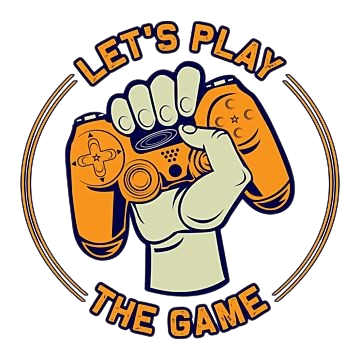Do You Have a ‘Living Room Kid’ or a ‘Bedroom Kid’? What It Says About Your Family Dynamic
As families grow and adapt to different living arrangements, one of the most intriguing dynamics that can arise is the distinction between a ‘living room kid’ and a ‘bedroom kid.’ This subtle categorization reflects more than just where a child spends their time – it offers profound insights into the family’s daily rhythm, values, and how interactions unfold within the home. Understanding these two distinct types of kids can provide valuable perspective on how a household functions, how parents communicate with their children, and how each child expresses their personality.
Understanding the ‘Living Room Kid’ and ‘Bedroom Kid’
The ‘living room kid’ is typically a social, outgoing child who thrives in communal spaces. They enjoy being the center of attention, often engaging in conversation with the whole family, and perhaps even taking the lead in family activities. Their favorite space is the living room, where they feel comfortable participating in everything happening around them, whether it’s a movie night, a game night, or casual conversations. These children are deeply integrated into the family’s collective experiences.
In contrast, the ‘bedroom kid’ tends to be more introspective, independent, and private. Their domain is the bedroom, where they retreat to unwind, play, or even engage in more solitary creative activities such as reading, drawing, or crafting. These children may be quieter, preferring time alone to recharge. Their space provides them a sanctuary for reflection, self-expression, and personal growth.
The Role of Parenting Styles in Shaping the ‘Living Room Kid’ or ‘Bedroom Kid’

Family dynamics and parenting styles play a crucial role in determining whether a child gravitates toward the living room or bedroom. Authoritative parenting, which encourages open communication and shared decision-making, often fosters ‘living room kids.’ These children are more likely to engage with the family as a whole, feeling comfortable expressing themselves in front of others, and enjoying collaborative family time.
On the other hand, authoritarian or permissive parenting styles may inadvertently encourage a child to become a ‘bedroom kid.’ With less structured interaction, these children may seek solace in their private space, creating boundaries that allow them to establish a sense of independence. The level of freedom, the amount of space they are given to express themselves, and the autonomy they are allowed to exercise all influence whether they prefer the living room or bedroom.
The Family Dynamic of a ‘Living Room Kid’
A ‘living room kid’ is often the one who binds the family together. They are more likely to seek out connection, whether through play, conversation, or shared experiences. The living room becomes their stage – a place where they can bond with parents, siblings, and even visitors. These kids thrive on social interactions, often initiating activities and seeking to bring others together.
These children may have an innate sense of leadership or confidence that translates into their role within the family. They may excel at communicating, organizing family games, or simply engaging in dialogue that involves the entire household. Their ability to integrate seamlessly into the daily family activities helps maintain a sense of unity and cooperation.
Additionally, living room kids are more likely to be adaptable and flexible when it comes to family routines. They may be quick to change plans or embrace new family traditions. This adaptability is a reflection of their high level of emotional intelligence, which allows them to connect with others easily and navigate different family dynamics.
The Impact of the ‘Bedroom Kid’ on Family Dynamics
The ‘bedroom kid’, in contrast, brings a different but equally valuable dynamic to the family. These children are often more independent, self-sufficient, and creative. Their preference for solitude in their bedroom provides them with the space to engage in deep thinking and creative pursuits. Whether they are drawing, writing, or building imaginary worlds, their private space allows them to focus on activities that nurture their inner world.
This doesn’t mean that bedroom kids are less social or involved in family life. Rather, they may express their affection and love in quieter ways. While a living room kid may seek attention through words or actions, a bedroom kid might show their love by creating something special for their family, writing thoughtful notes, or finding small ways to contribute behind the scenes.
These children also tend to be more reflective. Their introverted nature means they are likely to spend time thinking deeply about the world around them, often seeking to understand their feelings, thoughts, and experiences. They are often perceived as more emotionally mature at a young age due to the introspective activities they pursue.
Why Knowing Your Child’s Space Matters
Understanding whether your child gravitates toward the living room or bedroom offers key insights into your family’s emotional and social dynamics. For parents, recognizing this distinction can help tailor their parenting approach to better support their child’s needs. Children who identify as ‘living room kids’ may require more opportunities for social interaction and activities that encourage group participation. Conversely, bedroom kids may benefit from time alone to engage in creative pursuits or reflect on their emotions without the pressure of constant family interaction.
By recognizing and honoring each child’s preferred space, families can create environments that foster growth, communication, and harmony. For example, living room kids may thrive in family-centric environments that promote communal experiences, while bedroom kids might benefit from more quiet time and creative freedom.
Creating the Right Space for Both Types of Kids
Designing the ideal home environment for both living room kids and bedroom kids requires balance. The living room should be a vibrant, dynamic space that encourages engagement, socialization, and family bonding. This can be achieved through activities like family movie nights, game nights, or shared creative projects.
On the other hand, a bedroom designed for a ‘bedroom kid’ should prioritize comfort, privacy, and opportunities for self-expression. Personalizing the space with things like bookshelves, art supplies, or quiet corners can help these children feel at ease while also encouraging creativity.
By allowing both types of children to have their own spaces that cater to their personalities, families can create a dynamic where both social connection and individual growth are nurtured.
How Family Dynamics Can Be Enhanced by Recognizing These Differences
Understanding the roles of living room kids and bedroom kids can help strengthen family relationships. It fosters better communication between parents and children, encouraging a more tailored approach to parenting that respects each child’s unique needs. Families can thrive when they learn to adapt to each child’s preferred method of interaction – whether that means spending more quality time in the living room for family bonding or giving children the space they need in their bedroom for personal growth.
Conclusion: The Significance of Knowing Your Child’s Preferred Space
The distinction between a ‘living room kid’ and a ‘bedroom kid’ is more than just a quirky categorization – it’s a reflection of the deeper emotional and social dynamics at play within a family. By acknowledging and understanding these differences, parents can create a more harmonious and supportive environment that helps all children flourish, whether they prefer the buzz of the living room or the solitude of their bedroom.
By embracing both types of children and offering them the space they need to grow and thrive, families can build stronger bonds, more open lines of communication, and a deeper understanding of each other’s unique personalities and needs.




















